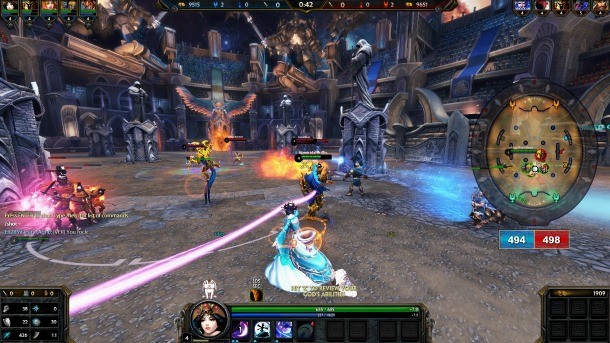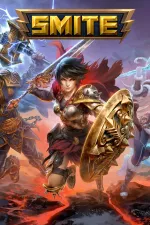Smite Review

Hi-Rez Studios’ free-to-play Smite occupies an interesting space in a genre that’s going to see a deluge of new titles in 2014. Most multiplayer online battle arena (MOBA) titles feature top-down, isometric action, but Smite gives players the chance to play in third-person with a first-person shooter feel. Even auto-attacks are skillshots, making combat feel different from other MOBAs. Smite also features significant mode variety, allowing players to compete in unique deathmatches or themed games.
Smite puts you in the role of an ancient god; the character pool currently draws upon Greek, Norse, Chinese, Mayan, and more, allowing Hi-Rez a nearly infinite pool of flavorful characters with appropriate abilities. Thanatos can sense death and has a skillset focused on assassination, paired with an ultimate ability that allows him to execute a weakened player in a single, long-range dive. Zeus comes with all the powers you’d expect a thunder god to have, and Poseidon has the signature ability to “release the Kraken,” doing heavy AOE damage. The colorful cast of characters is interesting, and each god and goddess feels unique in terms of skillsets and style.
Smite’s third-person design changes things significantly from the top-down isometric MOBA paradigm. Every attack requires skill, so you can’t just rely on auto-attack to do your work. Everything from the basic slash of an axe or magic from a stave needs to be carefully timed and aimed in order to land. The range of each move is generally shown after a skill has been highlighted, and then you direct it to land in a specific area. Smite presents a huge change from games that often have “click-aimed” skills and abilities, and each character has specific nuances to master.
Smite features a classic competitive mode that mirrors the structure of the go-to MOBA map: creeps spawn in three lanes and are assisted by players pushing, ganking, and team-fighting to the opposing base. Smite also has an all-random, all-middle mode that is becoming more popular in MOBA titles. While the standard mode is certainly the go-to for competitive league play and balance, Smite’s Arena and custom modes make it stand out from competitors.
Arena mode is similar to deathmatch; it’s a small space where players have no room to hide, and a single lane stretches from base to base. This distills the game down to a quick play five-vs-five brawl with faster leveling and gold accumulation. This mode removes the laning, ganking, jungling and other aspects that are often associated with a traditional MOBA match, constantly serving up nothing but the core of genre: the teamfight. The clashes between players are the best parts of any given MOBA match, and Arena lets you focus on them exclusively in fast-paced games that require a different playstyle. This mode is the best Smite has to offer, and players who gravitate toward it can also find ranked, competitive league play.
Smite also features a “daily match,” a non-competitive themed fight that pits zany god combos against each other. Maybe it’s an all-Poseidon water brawl, or a massive turret all-Vulcan battle. With a ton of cool possibilities in the daily match, it’s a great format for goofing off.
The majority of MOBA titles on the market today feature the option to make a la carte purchases with in-game currency or cash. Players are free to use that model in Smite, but if you plan on investing a lot of time, the option to just “buy” the whole game is available. This unlocks all past, present, and future characters, so it transforms a free-to-play title into a more traditional one-time purchase. Players are then free to spend their in-game coins on skins and cosmetics.
Smite is an excellent addition to an expanding genre, and one that distinguishes itself from the rest of the pack with decidedly different gameplay, a quirky and lighthearted take on classic mythology, and a variety of interesting modes.

Get the Game Informer Print Edition!
Explore your favorite games in premium print format, delivered to your door.
- 10 issues per year
- Only $4.80 per issue
- Full digital magazine archive access
- Since 1991










